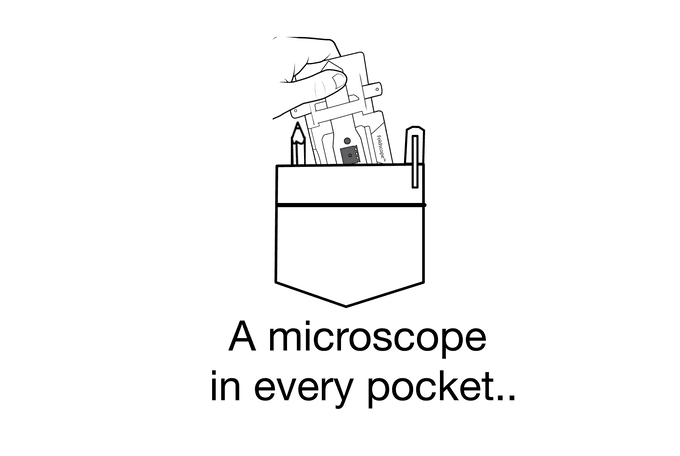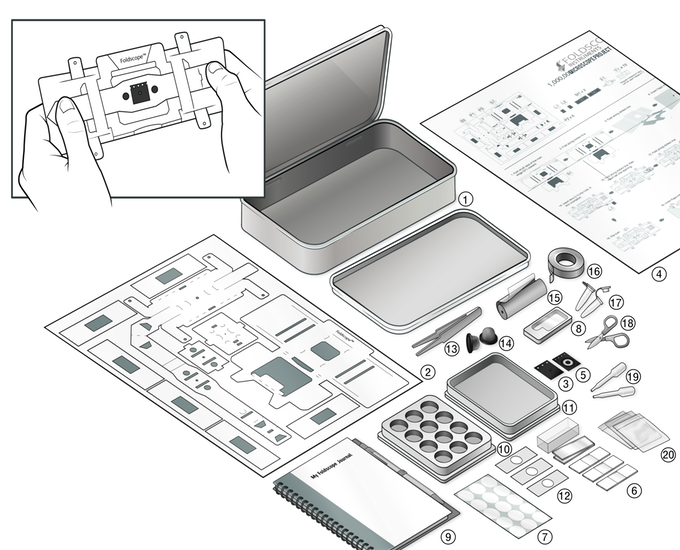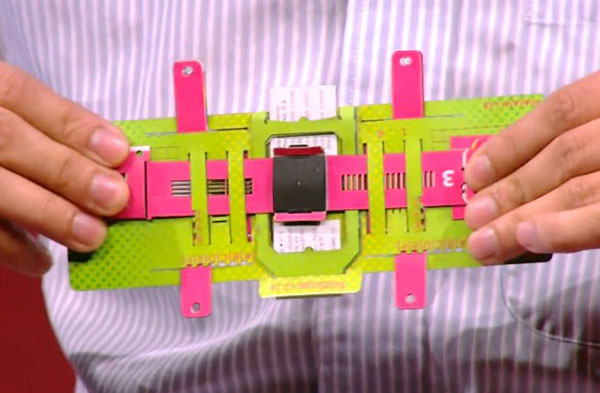
There exists and entire world at the microscopic level that we never get to see outside of pictures in textbooks and online. But there’s something really cool about being able to check out the inside of a cell you just scraped off the walls of your own mouth, or being able to examine the bulb of a hair you just plucked out of your own head. With the Foldscope, not only can you do that, but you can then unfold it and pack right back into your pocket. It provides 140X magnification, which is enough for “imaging live individual cells, cellular organelles, embryos, swimming bacteria and much more.”
The Foldscope has been around for 5 years, but started out as a project to provide third world countries affordable access to scientific instruments. So the company “built, designed and shipped (free of any cost) 50,000 Foldscopes to kids (and teachers, home-school moms, classrooms, naturalists, gem collectors, bee-keepers, tribal kids, camel herders, space scientists, parasitologists, scrap-metal collectors.. you get the point) around the world in 130+ countries.” Now it’s your turn to own one, and you’ll only have to pledge $20 to do so. Know that this money will get you more than just the Foldscope, but an entire scientific kit including slides, Petri dishes, strainers, pipettes, tweezers… If you’ve got even a passing interest in science, this could kick it into high gear.


[ Project Page ]



